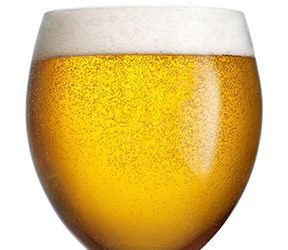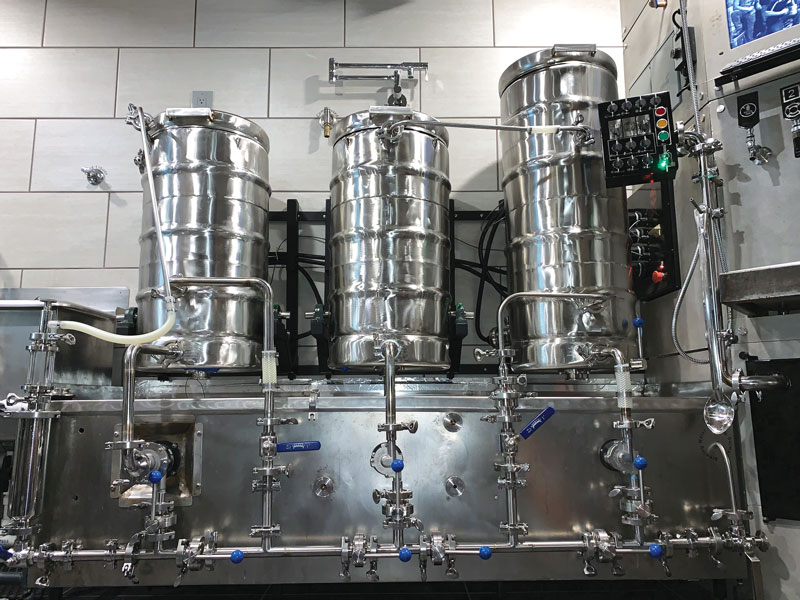Baird Brewing Belgian Strong Pale Ale clone
Baird Brewing Belgian Strong Pale Ale clone
(5 gallons/19 L, all-grain)
OG = 1.071 FG = 1.009
IBU = 30 SRM = 5 ABV = 8%
Ingredients
9.0 lb. (4.0 kg) Bohemian Pilsner malt (floor-malted)
2.25 lb. (1.0 kg) German Munich II malt
0.75 lb. (340 g) German light wheat malt
0.50 lb. (230 g) German rye malt
0.25 lb. (110 g) unmalted wheat
1.25 lb. (570 g) candi sugar (or white table sugar) (5-10 mins)
5.5 AAU Nugget hops (75 min.) (0.5 oz./14 g of 11.0% alpha acids)
3.2 AAU Motueka hops (45 min.) (0.5 oz./14 g of 6.4% alpha acids)
2.85 AAU Tradition hops (25 min.) (0.5 oz./14 g of 5.7% alpha acids)
1.25 AAU East Kent Golding hops (15 min.) (0.25 oz./7 g of 5.0% alpha acids)
0.95 AAU Spalter hops (15 min.) (0.25 oz./7 g of 3.8% alpha acids)
0.25 oz. (7 g) Tettnanger hops (5 min.)
0.25 oz. (7 g) Saaz hops (5 min.)
0.25 oz. (7 g) Hersbrucker hops (0 min.)
0.25 oz. (7 g) Styrian Golding hops (0 min.)
0.25 oz. (7 g) East Kent Goldings hops (dry hop)
0.25 oz. (7 g) Spalter hops (dry hop)
0.25 oz. (7 g) Tettnanger hops (dry hop)
0.25 oz. (7 g) Saaz hops (dry hop)
0.25 oz. (7 g) Hersbrucker hops (dry hop)
0.25 oz. (7 g) Styrian Golding hops (dry hop)
White Labs WLP410 (Belgian Wit II) yeast
5.0 oz. (140 g) corn sugar (if priming)
Step by Step
Mash at 149 °F (65 °C) for 90 minutes. Sparge with enough water to allow for 20 liters (5.2 gal.) in the fermenter after a 90 minute boil (5 gal./19 L of finished beer). Chill wort to 72 °F (22 °C) and let temperature rise during the first 12–24 hours to 75 °F (24 °C). Maintain temperature for 7–10 days until fermentation finishes. Chill to 59 °F (15 °C), transfer and dry hop for 5–7 days, keeping temperature between 59–68 °F (15–20 °C). Chill to 45 °F (8 °C) before bottling or kegging. Condition cold for several months.
Written by Glenn BurnSilver

Chris Poel, Lead Brewer at Baird Brewing in Numazu, Japan says this beer relies on a light body and mild hop character, but features a spiciness and subtle esters from a Belgian yeast strain that adds “just enough complexity without becoming too over-the-top with phenolics.”



